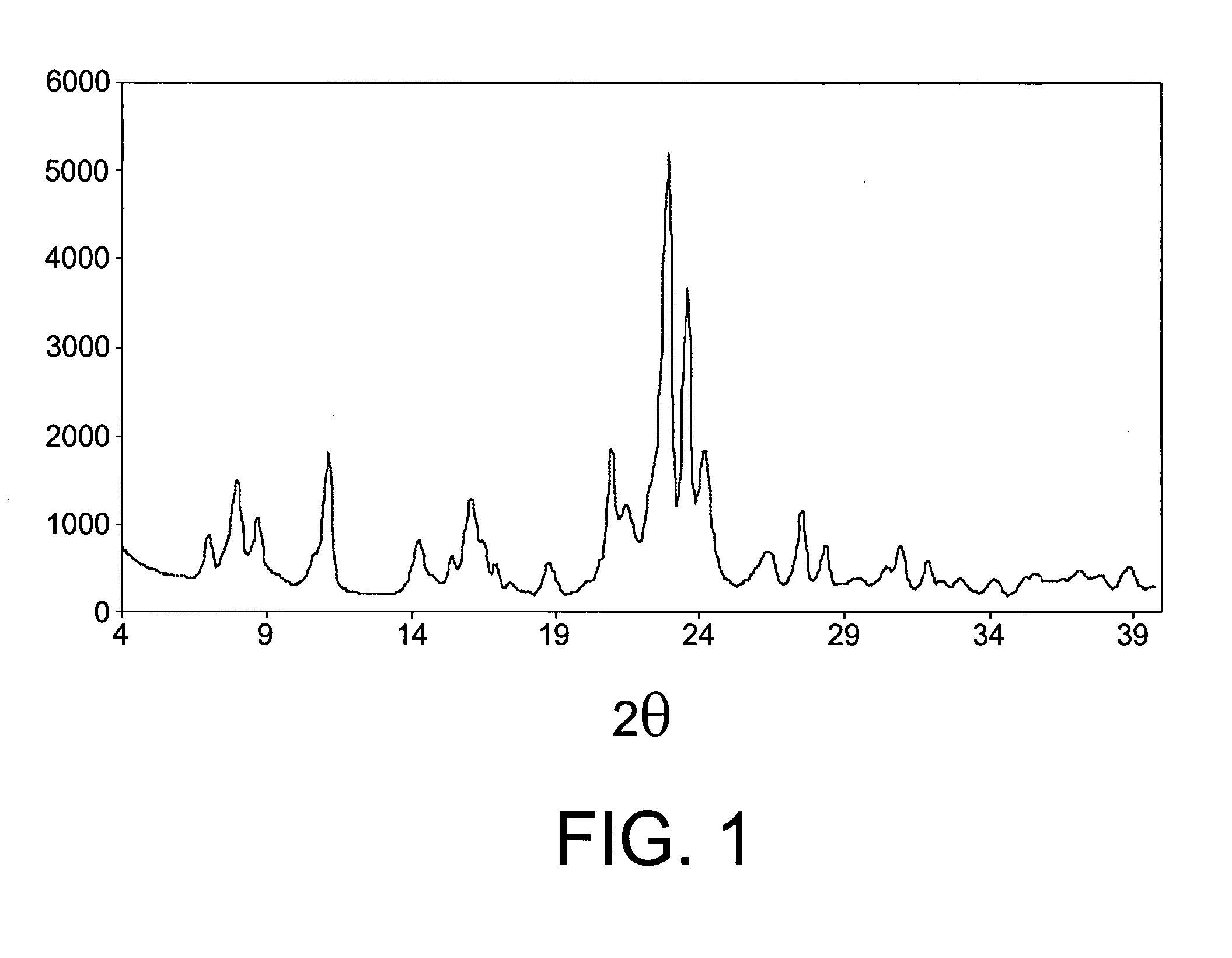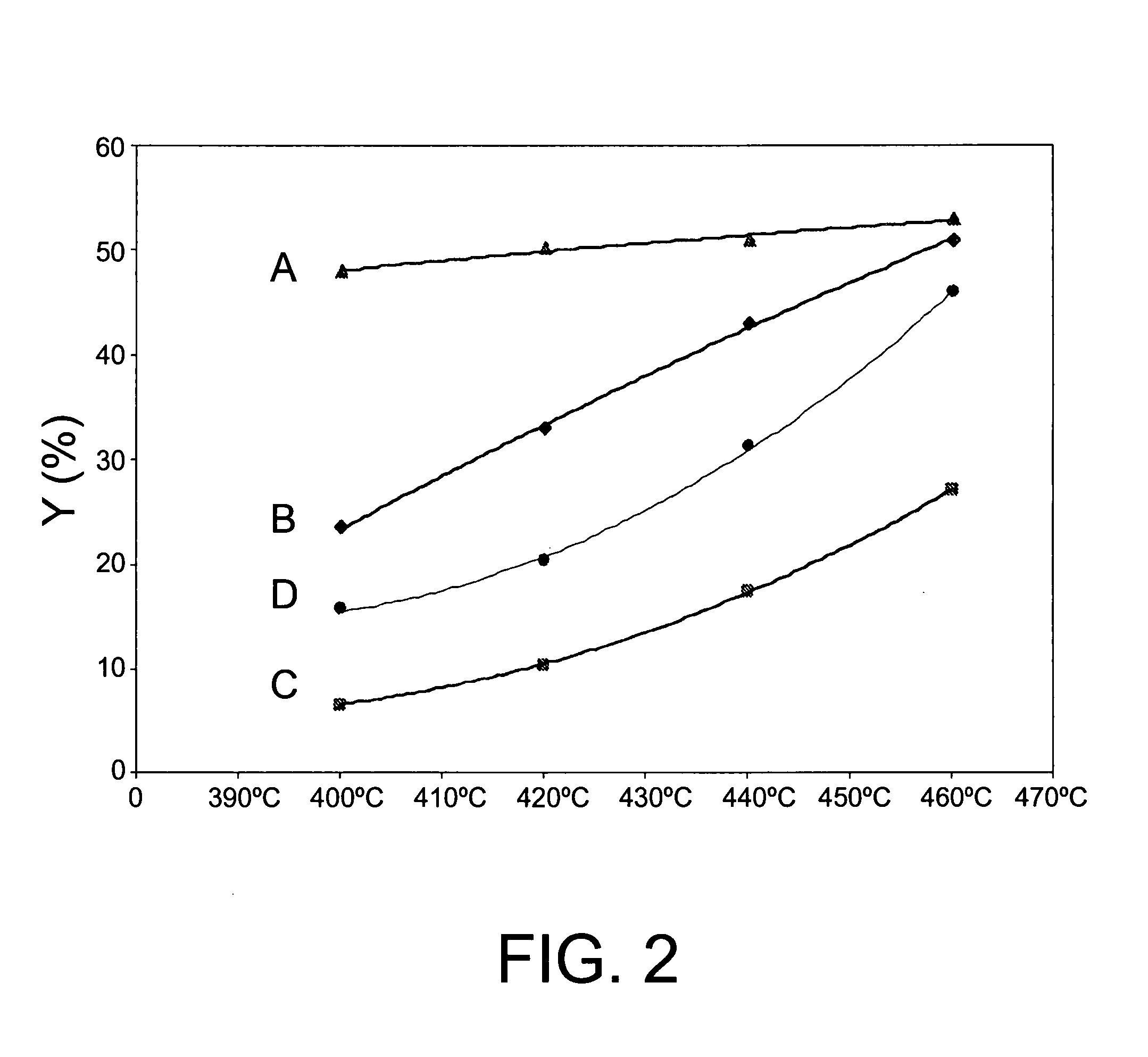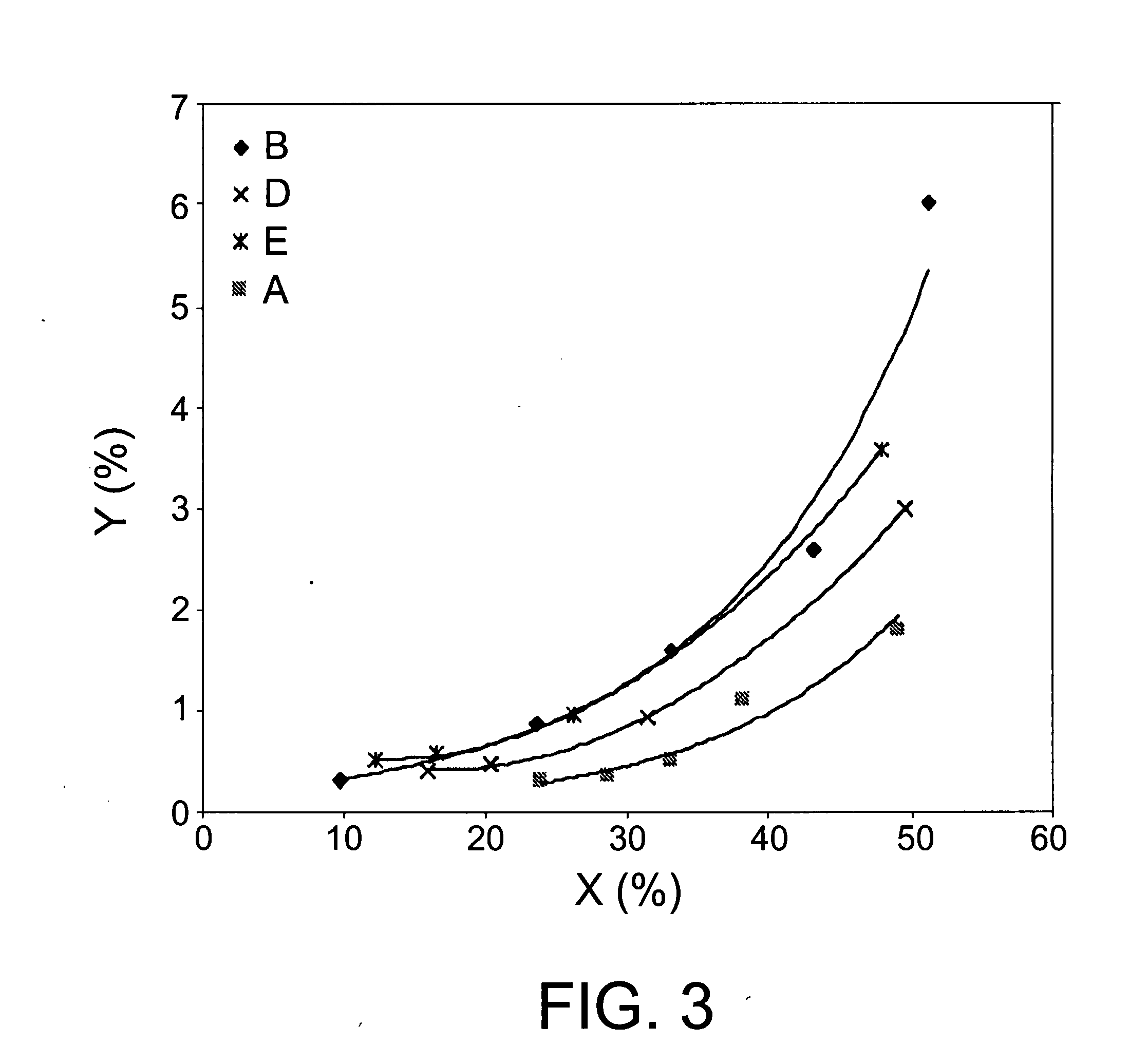Method and Catalyst for the Transalkylation/Dealkylation of Organic Compounds
a technology of organic compounds and catalysts, which is applied in the direction of molecular sieve catalysts, hydrocarbon preparations, molecular sieve catalysts, etc., can solve the problems of reducing the yield of each one of the btx's, and reducing the overall catalytic activity. , to achieve the effect of increasing the catalytic selectivity of the zeoli
- Summary
- Abstract
- Description
- Claims
- Application Information
AI Technical Summary
Benefits of technology
Problems solved by technology
Method used
Image
Examples
example 2
Catalytic Activity for Toluene Disproportionation of the Zeolite Described in Example 1
[0089] The ITQ-13 zeolite (Catalyst A) in Example 1 was conformed in particles of diameters within the 0.2-0.5 mm range, by means of forming tablets by compressing, grinding and sifting. 1 gram of this material is mixed with silicon carbon particles ranging from 0.6 to 0.9 mm in size up to the point at which the volume of the mixture of the two was 2.5 ml. The homogeneous mixture of these two materials was placed inside a steel tube reactor of a one-inch outer diameter. The catalytic toluene disproportionation experiment was conducted under the following reaction conditions: pressure 30 bar, spatial velocity 1 hour−1, hydrogen / toluene molar relation of 8.5 and 400° C. temperature. Under these conditions, following a six-hour reaction time, a 47.9% conversion was achieved, with a molar yield of benzene and xylenes respectively of 23.5% and 21.1%.
example 3
[0090] Catalyst A was studied using the same experimental method and reaction conditions as in Example 2, the only modification being the reaction temperature, which was 420° C. in this case. Under these conditions, a 50.3% conversion was achieved, with a molar yield of benzene and xylenes respectively of 24.2% and 21.8%.
example 4
[0091] Catalyst A was studied using the same experimental method and reaction conditions as in Example 2, modifying the reaction temperature, which was 440° C. in this case. Under these conditions, a 51.1% conversion was achieved, with a molar yield of benzene and xylenes respectively of 24.5% and 21.7%.
PUM
| Property | Measurement | Unit |
|---|---|---|
| pressure | aaaaa | aaaaa |
| temperature | aaaaa | aaaaa |
| temperature | aaaaa | aaaaa |
Abstract
Description
Claims
Application Information
 Login to View More
Login to View More - R&D
- Intellectual Property
- Life Sciences
- Materials
- Tech Scout
- Unparalleled Data Quality
- Higher Quality Content
- 60% Fewer Hallucinations
Browse by: Latest US Patents, China's latest patents, Technical Efficacy Thesaurus, Application Domain, Technology Topic, Popular Technical Reports.
© 2025 PatSnap. All rights reserved.Legal|Privacy policy|Modern Slavery Act Transparency Statement|Sitemap|About US| Contact US: help@patsnap.com



